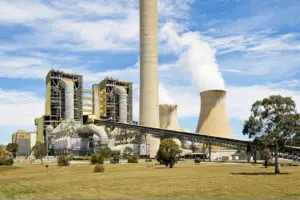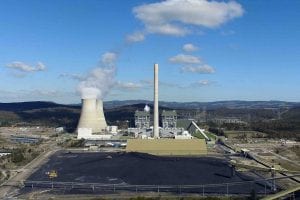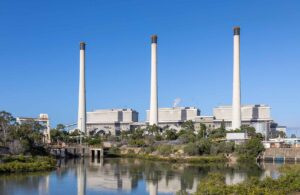Resources minister Matt Canavan is leading a renewed effort to secure federal funding for carbon capture and storage projects, as part of a wider strategy to see more investment in coal-fired power stations in Australia.
As reported by the Australian Financial Review, representatives from oil and gas company Santos, and coal miner Glencore have met with Prime Minister Scott Morrison and advocated for carbon capture and storage projects to receive financial support under the $2 billion Climate Solutions Fund.
The push to invest in carbon capture and storage projects appears to have the backing of resources minister Matt Canavan, who confirmed that financial support for such projects was under active consideration by the Morrison government.
Two of Morrison’s closest advisors are the former CEO and deputy CEO of the Mineral Council of Australia, the principal coal lobby in Australia which also supports CCS, even though projects to date have been hugely expensive and not very effective.
“We are looking into this. We have put a lot into CCS and we are looking at the next steps,” Canavan told the Financial Review.
Carbon capture and storage technologies have already received substantial financial support from the Australian government – around $500 million – but almost nothing has been delivered in terms of actual emissions reduction.
Companies like Glencore and Santos see carbon capture as a technology that would enable coal, oil and gas industries to continue while supporting efforts to limit global warming.
In its 2019 Climate Change report, Santos said that it believed carbon capture and storage would be necessary in scenarios that limit global warming to well below 2 degrees.
The effort to promote carbon capture and storage appears to be part of a renewed effort to have the federal government underwrite the development of a new coal-fired power station in Australia.
Glencore lobbyists are understood to have flagged the prospect of a new high-efficiency low-emissions (HELE) power station being paired with carbon capture and storage technology.
“Glencore believes government policy should be extended to support all low emission technologies, including HELE and CCS which can co-exist with renewables,” a Glencore spokesperson said.
The renewed push also follows reports of a heated exchange between prime minister Scott Morrison and Canavan, the latter apparently angered by Morrison backing down from a commitment to underwrite the construction of a new coal-fired generator in Queensland.
The Morrison government has allocated $2 billion to the Climate Solutions Fund to purchase additional greenhouse gas abatement, as part of efforts to meet the government’s 2030 emissions reduction targets.
The commitment was based on previous experience with the Emissions Reduction Fund, which has secured a range of emissions reductions from land management and waste management projects, purchasing Australian Carbon Credit Units (ACCUs) at an average price of around $15 per tonne.
However carbon capture and storage technologies remain prohibitively expensive and relatively unproven, with latest GenCost report issued by the CSIRO showed that carbon capture technologies nearly doubled the capital costs of both coal and gas-fired power stations.
The cost of reducing emissions through the use of carbon capture and storage technologies can be as high as $80 per tonne, meaning the use of funds from the Climate Solutions Fund would raise further questions around the already shaky plans from the Morrison government to achieve its 2030 reduction target.
”I would say at this stage of the CCS development stage, that ACCUs by itself would not be sufficient to attract or get that over the line,” Canavan conceded.
 The levelised energy costs of new coal and gas projects combined with carbon capture technologies also remained significantly more expensive than new solar and wind projects, even when renewables were backed up by energy storage technologies.
The levelised energy costs of new coal and gas projects combined with carbon capture technologies also remained significantly more expensive than new solar and wind projects, even when renewables were backed up by energy storage technologies.
Analysis completed by think tank The Australia Institute has shown that $1.3 billion has been invested in carbon capture and storage projects since 2003, but there has been almost nothing to show in terms of operating projects and stored carbon emissions. There is just a single CCS project currently operating in Australia.
In August, Chevron Australia announced that it had commenced storing carbon dioxide captured from its offshore Gorgon gas project, off the coast of Western Australia, after years of delays. The project is expected to capture more than 100 million tonnes of carbon dioxide over the life of the project, representing around 40 per cent of the emissions produced by the Gorgon project.

The moves to direct funds allocated to the Climate Solutions Fund to CCS projects follows earlier moves from the prior Turnbull government, which sought to allow the Clean Energy Finance Corporation (CEFC) to invest in such projects.
Legislation currently prohibits the CEFC from investing in carbon capture technologies, and an amendment to lift the legislative prohibition was allowed to lapse when the parliament was dissolved for the 2019 federal election.
Last month, new an analysis published by researchers at Stanford University found that CCS could prove a hindrance to efforts to reduce global pollution from coal-fired power stations.
“Even if you have 100 per cent capture from the capture equipment, it is still worse, from a social cost perspective, than replacing a coal or gas plant with a wind farm because carbon capture never reduces air pollution and always has a capture equipment cost,” professor Mark Jacobson said.






